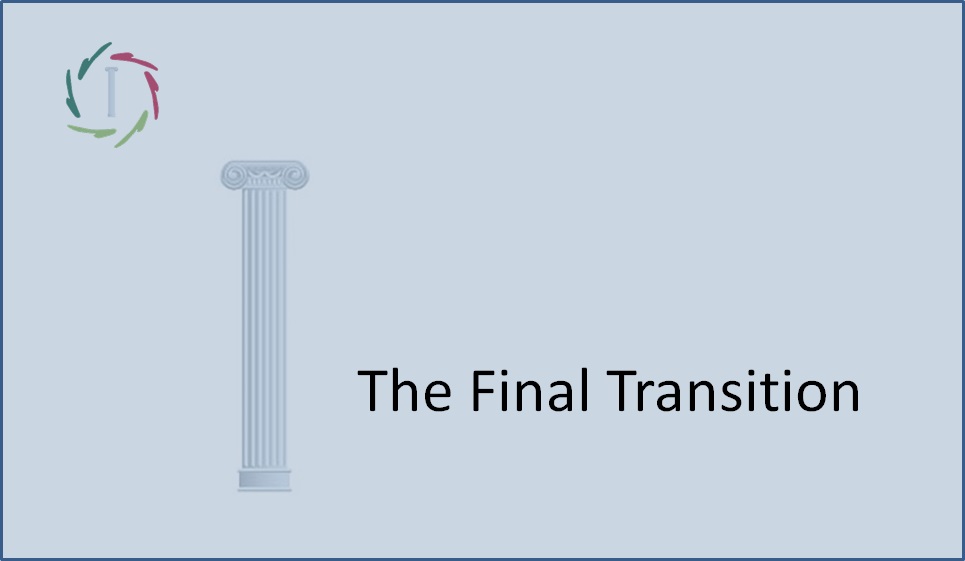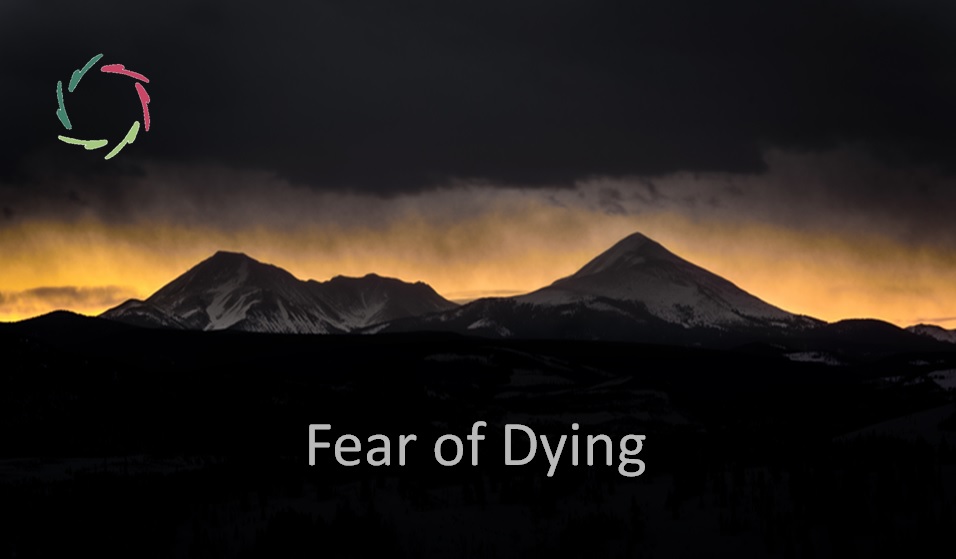4. The Final Transition

The symbolic level of palliative care is always of utmost importance.
People have the tendency to avoid thinking about death, making it into something strange or even scary… Then we try to ignore it even more, hence it becomes even scarier. However, life without integrating mortality is incomplete. As death draws closer, we look back at an incomplete life… and that hurts. Living life to the fullest will make it easier to face death, even for the relatives, and death will thus get a different meaning. ‘Mourning’ can also entail to reminisce on a fulfilled and worthwhile life.
Is the end of life a ‘part of death’ or a ‘part of life’?
The final stage of life often appears like a ‘mental death while the body is still alive’. It may not come as a surprise that some people would prefer to be physically dead. So existential fear is a realistic motive for euthanasia.
Clinically dying in a hospital bed. At all costs hanging on to dear life. Existential fear is also a definite cause of dysthanasia: dying without regard to the person’s quality of life, extending life through the wonders of modern medical science.
The most interesting period
Dying is an interesting and integral part of living as you can rightly say then: away with all obsolete shells. The pure existence. Pure relations towards others or to ‘God’ for believers. Purity can be cold or heartwarming. Each of us needs to live this period in warmth and with a feeling of profound and personal presence (towards a living human, towards a person in the afterlife…). It certainly is intriguing to know that people may shed tears of grief but also of happiness. Is it possible that in the final stages one may cry sometimes out of happiness, however misinterpret this for ‘sadness’ because dying and mourning are primarily regarded as a sad occasion? An important help from the care provider is the gentle (!) assistance in this matter. This may prove to be a subtle pearl in the oyster.
I do not belief in anything that follows death and resembles the life of before.
If anyone does value the ‘afterlife’ very much, I think: make sure you live before you die. What concretely happens afterwards, we’ll see then. The symbolic perception of the hereafter is something else. That is about the deeper meaning and this does indeed live in the here and now. Spiritual palliative care is mainly about the symbolic interpretation. A believer receives it together with his/her faith. Those without religious faith have equal rights and it is certainly just as important. Unfortunately this escapes many people. Either people look for some kind of pseudo-symbolism or some fake-ritualistic activities aiming more at covering up imperfections than at looking for beauty.
Everyone in their final transition has a right to qualitative symbolism.
In a cold-clinical environment with a bunch of technicalities, this can get lost. It doesn’t even have to be substantial. A smile and ‘infinite’ patience (although only momentarily), being together beyond all technical necessities, can symbolize to the dying a connection with ‘he who cares for me’ or even ‘He who cares for me’. Qualitative symbolism can also be provided verbally. Perhaps it is then ‘just a story’, but when a story with deeper meaning is involved, the story in itself is trivial. It’s all about the deeper meaning.
The most beautiful gift
The most precious gift in life is a deep and warm palliative care. This includes support in relation to one’s own dying. It’s about experiencing together the only thing that connects us all, our mortality. On the other hand, living through the final stages of life in emotional loneliness or in an imposed state of semi stupor, that is not how I would like to die. Certainly then I would like to be as clear of mind as possible and feel fine. The last hours of life are very valuable. So let this be my last will for myself: ‘yes’ to euthanasia, ‘no’ to dysthanasia
and an emphatic ‘yes’ to a beautiful spiritual final transition.


